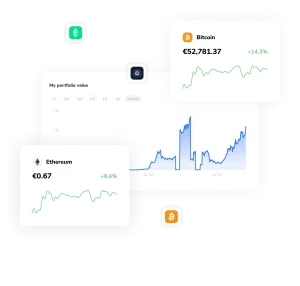
Let’s be honest—getting a loan from a bank can feel like running an obstacle course. Paperwork, credit checks, waiting days (or weeks) for approval. But what if you could borrow money in minutes, without a middleman? That’s the promise of decentralized finance (DeFi), and it’s turning the traditional loan market on its head.
The Old Way vs. The New Way
Traditional loans rely on banks, credit scores, and human underwriters. DeFi loans? They run on code, collateral, and blockchain networks. Here’s the deal:
| Traditional Loans | DeFi Loans |
| Require credit checks | Collateral-based (no credit score) |
| Slow approval process | Near-instant approval |
| Geographic restrictions | Global access |
| Bank hours = limited availability | 24/7 availability |
Why DeFi Loans Are Gaining Traction
DeFi isn’t just a tech experiment—it’s solving real pain points. Here’s why borrowers and lenders are flocking to it:
- No gatekeepers: Want a loan? Just connect your crypto wallet. No bank manager, no paperwork.
- Transparency: Every transaction lives on the blockchain. No hidden fees, no fine print surprises.
- Higher yields for lenders: With banks offering near-zero interest, DeFi can deliver double-digit APY—though, sure, with higher risk.
- Financial inclusion: Billions are “unbanked” but have internet access. DeFi doesn’t care about your zip code or banking history.
The Collateral Twist
Here’s where DeFi gets interesting—and a little polarizing. Most platforms require over-collateralization. That means you’d need to lock up $150 in crypto to borrow $100. Sounds counterintuitive? Well, it eliminates credit risk but limits accessibility. Some newer protocols are experimenting with under-collateralized loans, but they’re still the exception.
The Risks (Because Nothing’s Perfect)
DeFi isn’t all rainbows and 20% APYs. There are real hurdles:
- Smart contract bugs: Code is law… until a hacker exploits a vulnerability. Billions have been lost this way.
- Volatility: Crypto prices swing wildly. A market crash could trigger liquidations.
- Regulatory gray areas: Governments are still figuring out how to handle DeFi. Sudden crackdowns? Possible.
That said, insurance protocols and audits are improving. It’s a fast-evolving space.
Real-World Impact: Who’s Using DeFi Loans?
From small businesses in Argentina avoiding hyperinflation to crypto traders leveraging positions without selling assets—DeFi loans have niche but growing use cases. Even traditional finance is peeking in. Institutions are quietly testing “wrapped” versions of stocks and bonds on DeFi platforms.
The Interest Rate Game Changer
Banks set rates behind closed doors. DeFi rates? They’re determined by supply and demand algorithms. More lenders = lower rates. More borrowers = higher rates. Simple, transparent, and—frankly—a breath of fresh air.
What’s Next? The Hybrid Future
Pure DeFi might not replace banks entirely. But hybrid models? They’re coming. Imagine a bank offering DeFi-like speed with traditional safeguards. Or a DeFi platform partnering with credit bureaus for under-collateralized loans. The lines will blur.
One thing’s clear: the loan market won’t look the same in five years. Whether you’re a skeptic or a true believer, DeFi is forcing everyone to rethink what borrowing and lending can be.








